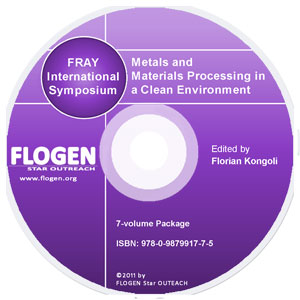
CD shopping page |
2011-Sustainable Industrial Processing Summit
|
| Editors: | Florian K |
| Publisher: | Flogen Star OUTREACH |
| Publication Year: | 2012 |
| Pages: | 708 pages |
| ISBN: | 978-0-9879917-1-3 |
| ISSN: | 2291-1227 (Metals and Materials Processing in a Clean Environment Series) |
Charcoal Ironmaking: A Contribution For CO2 Mitigation
Cyro Takano1; Solon Y. Tagusagawa2; Claudio A. Scarpinella1; Marcelo B. Mourao1; Guilherme F. B. Lenz e Silva1;1UNIVERSITY OF SAO PAULO, Sao Paulo, Brazil; 2UNIVERSITY OF SAO PAULO, Sao Paulo, Botswana;
Type of Paper: Invite
Id Paper: 240
Topic: 5
Abstract:
Replacing or producing part of the traditional coke ironmaking by renewable energy source can avoid using around 0.45 t of carbon from fossil source which represents 1,65t of CO2 emission after total combustion. Brazil, unlike in almost other ironmaking producing countries, already contributes and presents a potential for higher contribution in charcoal ironmaking. This is due to the large extension of native forests, the availability of land suitable for forest plantations, excellent sun energy and water, which have allowed charcoal production at low cost. Presently, in Brazil, 30% of the total 35Mt/year of pig iron production comes from charcoal based native technology. Many “Mini Blast Furnace†each one with capacity from 20,000 up to 300,000 t/year of pig iron produces them. Many developments, based on technology adopted in coke Blast Furnaces, have been lead to better performance of these Mini Blast Furnaces. On the other hand, the productivity evolution on planted forest of eucalyptus has been increased, over last 30 years, from 20 to 41 m3/ha.year, and it is expecting to achieve 60 m3/ha.year up to year 2020. Presently the main constraints, in Brazil, are on charcoal making technology, which is mostly based on ancient ones and the capital cost for 6 to 7 years growing plantations A mandatory regulatory new policy should consider the similar mechanism like carbon credit for charcoal production development and as a source for capital.